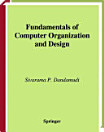Introduction to Assembly Language Programming: From 8086 to Pentium Processors
Mar 2013 · Springer Science & Business Media
Ebook
644
Pages
reportRatings and reviews aren’t verified Learn More
About this ebook
There are three main reasons for writing this book. While several assembly language books are on the market, almost all of them cover only the 8086 processor-a 16-bit processor Intel introduced in 1979. A modem computer organization or assembly language course requires treatment of a more recent processor like the Pentium, which is a 32-bit processor in the Intel family. This is one of the main motivations for writing this book. There are two other equally valid reasons. The book approaches assembly language programming from the high-level language viewpoint. As a result, it focuses on the assembly language features that are required to efficiently implement high-level language constructs. Performance is another reason why people program in assembly language. This is particularly true with real-time application programming. Our treatment of assembly language programming is oriented toward performance optimiza tion. Every chapter ends with a performance section that discusses the impact of specific sets of assembly language statements on the performance of the whole program. Put another way, this book focuses on performance-oriented assembly language programming. Intended Use This book is intended as an introduction to assembly language programming using the Intel 80X86 family of processors. We have selected the assembly language of the Intel 80X86 processors (including the Pentium processor) be cause of the widespread availability of PCs and assemblers. Both Microsoft and Borland provide assemblers for the PCs.
Rate this ebook
Tell us what you think.
Reading information
Smartphones and tablets
Install the Google Play Books app for Android and iPad/iPhone. It syncs automatically with your account and allows you to read online or offline wherever you are.
Laptops and computers
You can listen to audiobooks purchased on Google Play using your computer's web browser.
eReaders and other devices
To read on e-ink devices like Kobo eReaders, you'll need to download a file and transfer it to your device. Follow the detailed Help Center instructions to transfer the files to supported eReaders.







